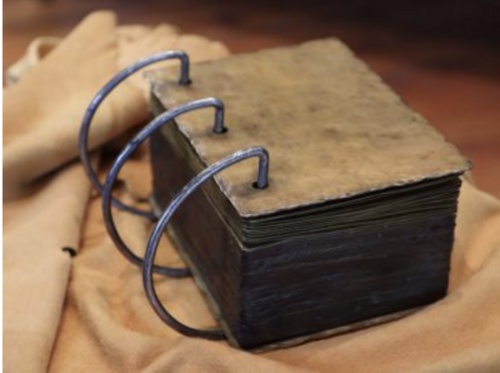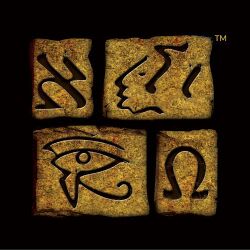
FAIR is a non-profit organization dedicated to providing well-documented answers to criticisms of the doctrine, practice, and history of The Church of Jesus Christ of Latter-day Saints.
The Book of Mormon declares that it was originally written in language known by Mormon as “reformed Egyptian”.[1]
There are a few examples of reformed Egyptian scripts that Latter-day Saints have identified. None have proposed that these were the scripts used to compose the original text of the Book of Mormon, but instead have used these to show that the idea of using a reformed Egyptian script to compose a text is plausible given the ancient context that the Book of Mormon is claimed to emerge from.
Critics have asked how the Book of Mormon plate text could have fit on the plates given the plates' dimensions. The plates were consistently described by witnesses as “about 8 inches in length, 6 or 7 inches in width, and 4 or 6 inches in depth, with the appearance of gold.”[2] There was a large portion of the plates that was sealed. Only about an inch of loose plates was available for Joseph Smith to translate. Below is a replica of the plates. The darker portion is the sealed portion while the lighter and looser portion is what Joseph Smith translated.

Perhaps the best answer to this is that Egyptian and Mesoamerican languages are primarily logographic languages. Logographs can represent a word or phrase. Perhaps the Book of Mormon was composed in a language that incorporated both Egyptian and Mesoamerican logographs to give us the “reformed Egyptian”. Large amounts of the translated Book of Mormon text could have been contained in the logographs of this Egypto-mesoamerican logographic system.
Indeed, the idea Book of Mormon plate text was composed logographically appears plausible given the Caractors Document that is allegedly a copy of the original Anthon Transcript known popularly among Latter-day Saints. Though there are some cautions that all parties should keep in mind when treating the document as an authentic representation of the original Anthon transcript or of what characters were originally on the Book of Mormon plates. Book of Mormon Central has produced a beautiful, well-documented essay and explanatory video to illuminate these complexities and prospects surrounding the so-called" Caractors Document". Readers can watch/read both by clicking on the link to the right. The video is embedded below as well.

It would be well to always keep in mind that the original script that the Book of Mormon was composed in—what the characters on the plates actually looked like—is not known with certainty today. Therefore, we do not know what, if any, meanings were attached to those characters. Some students of Latter-day Saint apologetics might unwittingly say that Hieratic or Demotic, for instance, was the actual script that the plate text was composed in. But that is very likely not true. When repeating that claim, it may lead our critics to continue to ask this question unnecessarily.
Hopefully this can give all the insight necessary to give a plausible enough “reason for the hope that is within us” for the ancient plausibility and historical authenticity of the Book of Mormon and the integrity of its claimed prophet-translator.[3]
Notes

FAIR is a non-profit organization dedicated to providing well-documented answers to criticisms of the doctrine, practice, and history of The Church of Jesus Christ of Latter-day Saints.
We are a volunteer organization. We invite you to give back.
Donate Now